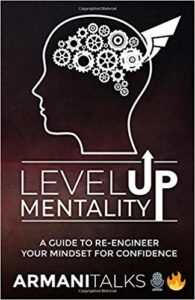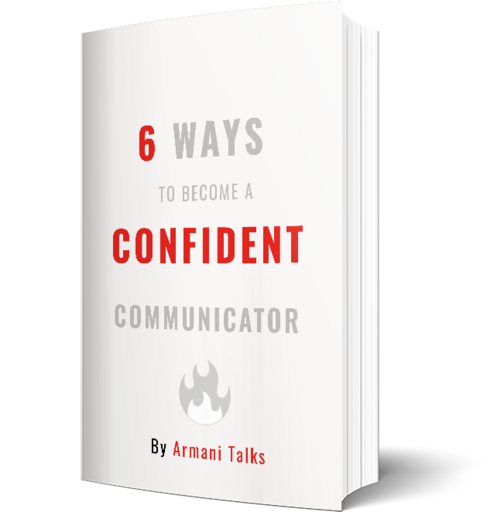Fundamentals of Storytelling
Nowadays, storytelling has become a big buzzword that is thrown around in a lot of industries.
Many different leadership positions talk about the importance of learning to tell a good story.
It’s been stated that many CEOs are now partnering up with screenwriters.
‘Hm.. really?’
Yes. The CEOs understand that a well-intentioned story beats a PowerPoint flooded with boring facts.
But here is the issue.
Many people are throwing storytelling around without talking about effective strategies.
And those who do bring up strategies?
They do so without proper use of the fundamentals.
The problem with this sort of thinking is that it builds an art form on a very poor foundation.
It’s like you jumping into painting when you can’t even hold a paintbrush.
Big mistake.
In today’s article, I am going to keep it simple.
Just like fundamentals should be.
You’ll learn about the basics of storytelling & how it is an art form that anyone can pick up.
Let’s begin.

What is Storytelling?
At the heart of it all, storytelling comes down to a connection of ideas.
The ideas are connected in a manner that builds a narrative.
But let me reiterate, storytelling comes down to the connection of ideas.
That’s it.
‘Idk bro…that sounds a little too simple to me.’
Good! Because this simple principle is where everything builds from.
When you can understand that storytelling is just about connecting ideas in a sequence, your whole world begins to shift.
You see stories all around you.
This blog?
A story.
Your journal entry?
A story.
The conversation you’re having with your coworker?
A story.
This sort of thinking allows you to look for the bigger picture.
Proper storytelling makes you a sharper thinker.
Which brings me to my next point…
What Type of Ideas are You Connecting?
‘So Armani, you mentioned storytelling comes down to a connection of ideas. What kind of ideas?’
That depends on your talk.
To create a good story, you need to know the WHY.
The WHY comes down to asking yourself what the story is about?
How can it add value to someone else’s life?
Having a WHY allows your mind to create a lens of perspective.
‘A lens of perspective?’
Yes.
Your brain is drowned with information on a daily basis.
The lens of perspective serves as a filter.
From the sea of information in your brain, you are able to select the few ideas that match your WHY.
You’ll often notice a lot of your best stories come from your personal experiences.
Humans love authenticity because it builds trust.
And if you are someone who can talk about your experiences, it will build rapport quicker.

In his book, Rich Dad Poor Dad, Robert Kiyosaki had the lens of perspective for personal finance.
Then with those lens, he reviewed his childhood.
He was able to notice a lot of lessons that he wouldn’t have been able to notice without the lens.
When approaching his childhood with the glasses of personal finance, he noticed his biological dad had a poor relationship with money.
While his best friend’s dad was a wizard.
Having the WHY of telling a story allowed him to create the #1 finance book of all time.
The Elements of a Story
Typically as you are connecting ideas, you want to be strategic with it.
You don’t just want to connect a bunch of facts & call that a story.
To keep your framework strong, aim to incorporate:
- Character
- Conflict
- Resolution
Once you have a WHY, you’ll have a structure for your story.
Now as you connect your ideas, do your best to have a character, conflict & resolution.
This information puts you ahead of 99% of people who ramble about a whole lot fo nothing.
Character
You can have 1 or many characters. But since this blog is about the fundamentals of storytelling, 1 is enough.
Your character is the protagonist who is living in the story. You can also add in an antagonist if you’re feeling creative.
Conflict
There are many ways to create a conflict. The conflict can be personal. Like someone overcoming anxiety.
The conflict can be due to the weather. Like a hurricane coming to the character’s city.
Once again, allow your creativity to shine.
Resolution
There’s a common misconception that all resolutions need to have a happy ending.
Incorrect.
A resolution can have a sad ending. But the most important thing is to allow the lesson to shine.
The main purpose of a story is to share lessons in a very subtle way.
Quick simulation of a short story:
There was a boy named John. John would always scroll through his Facebook feed & see a bunch of his friends with dogs. Those pictures got a lot of likes.
John decided he wanted a lot of likes so he adopted a dog named Bucky.
Bucky was a bad dog & would poop all over John’s house.
John returned the dog & got a turtle.
The turtle was even worse.
So John returned the turtle and decided to switch to Instagram.
- Character – John, dog & turtle.
- Conflict– John wanted more likes by getting a pet, but the pets were a dilemma.
- Resolution– John switched social platforms to stop worrying about the engagement.
A quick short story that helps you learn the fundamentals of storytelling.
Adding onto the Fundamentals
When I was playing basketball, I recall my trainer would always make me start off with free throws.
He wanted to make sure I shot the free throws correctly.
Proper bend of the knees.
Strong aim at the basket.
And a confident follow thru.
I wondered why he wouldn’t just let me go straight to shooting 3s.
But nowadays I know why.
He was adamant that I figured out the fundamentals.

And he was right. After shooting a bunch of free throws, it was MUCH easier to shoot from other parts of the court.
Same with learning the fundamentals of storytelling.
Once you understand the basics, everything else seems MUCH easier.
You have a superpower in today’s modern world.
Eventually, you can practice adding multiple characters.
You can experiment with having conflict after conflict.
Play around with the resolutions.
But always remember this champ..
Fundamentals first.
Master the Art of Storytelling
So just a quick recap since you made it this far.
Storytelling comes down to a connection of ideas.
How can you effectively connect the ideas to create an impactful message?
Start off with the WHY.
Why are you giving the talk and how can it benefit others?
Once you have that, practice by incorporating a story with the bare minimum elements of:
- Character
- Conflict
- Resolution
Keep practicing the fundamentals of storytelling through writing or speaking.
At first, your stories will be very long.
But with additional practice, you’ll begin chopping off the unnecessary details.
Storytelling is a major key in today’s world where people struggle with concentration.
Cut through the noise & deliver stories of power.
Mastery awaits.
– ArmaniTalks 🎙️🔥




